Reexamining the art, photography, and social practices of the 1980-1990s has long piqued the interest of art historian, Alisa Swindell. In looking at these materials, Swindell provides a solid base for understanding how artists of this period dealt with overwhelming personal experience while simultaneously producing artworks that define a period of crisis in arts communities. This week, the COMP Magazine caught up with Swindell to discuss her approach to research, the complexities of marginalized communities, notions of desire, and the ephemeral elements encountered that define a specific period in art history.
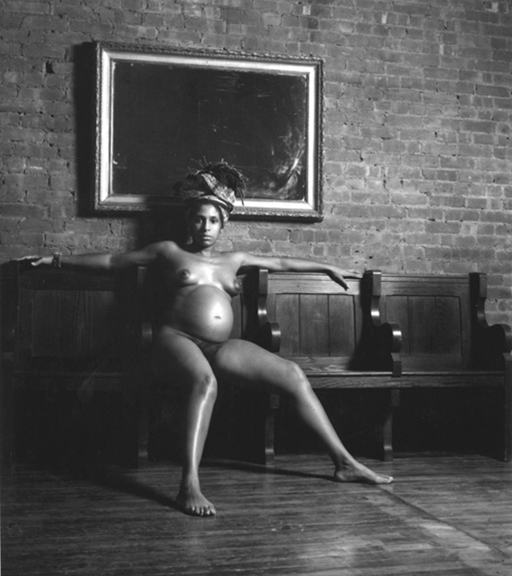
Renee Cox, YO MAMA AT HOME, 1992
Archival Digital Print on Cotton Rag
60″ x 60″
Your research focuses upon notions of desire as portrayed in photography during a pivotal time, 1985-1995. You selected this period in part due to the relevance of the AIDS crisis and its impact upon artist communities. I’m wandering if we can start with you identifying what drew you to this material?
My idea for this project grew out of a paper I wrote on the gay male, Nigerian, British ex-pat photographer Rotimi Fani-Kayode. I was considering his work in relation to Robert Mapplethorpe, who he was unfairly pitted against by the art world. I was thinking about what it meant to make and display the kind of homoerotic images they were working with in the 1980s, especially as men who were dealing with AIDS, how there were transactions of desire between their bodies of work. I am also more interested in these artists as members of communities other than the art world, how AIDS affected those communities, and how the work by these artists resisted the dominant narrative to make room for a multiplicity of desires to persist.
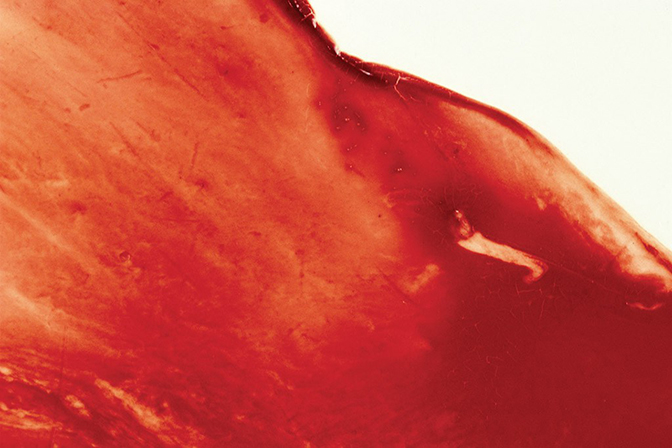
Andres Serrano, Blood and Semen V, 1987
Having grown up in this time, I was made aware of AIDS via mainstream outlets, yet feel it had limited coverage in contrast to the number of people who were affected by the crisis. Perhaps, the most memorable image I recall is “The Face of AIDS” (1990) by Therese Frare. This image was used by Benetton in a fairly controversial advertising campaign. For me, Frare’s image was AIDS. However, you are focused upon desire which is essentially the opposite to my view. Can you discuss images of desire as you see this in contrast to imagery like that of Frare?
The photography I am interested in runs counter to the work Frare’s mass media distributed images presented. I am interested in images that depict or invoke various forms of desire, sexual and romantic desire is of course a primary form, but I’m also interested in the desire for family, the desire to keep queer sex present, the desire for drugs, the desire to deny AIDS, the types of images that can bring forth desire in the viewer. It sounds very broad initially, but these forms were very interconnected in how members of the communities who were most affected by the AIDS crisis were stigmatized by the government and the mass press, and how this work refused that outsider and deadly telling of their lives.
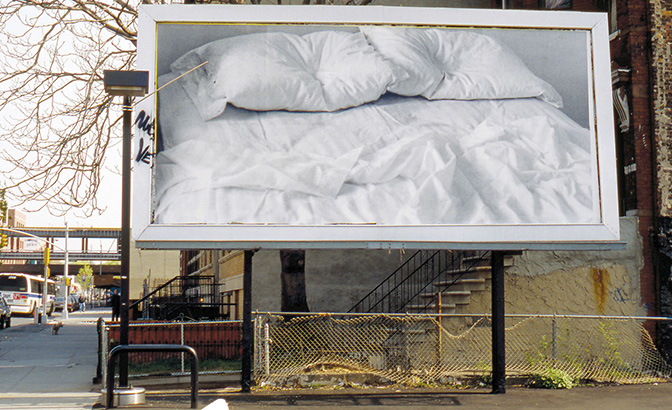
Felix Gonzalez-Torres. “Untitled.” 1991. Billboard, dimensions vary with installation.
The Museum of Modern Art, New York. Gift of Werner and Elaine Dannheisser.
© The Felix Gonzalez-Torres Foundation, New York.
Installation view at 11th Avenue and 38th Street, Manhattan (February 20–March 18, 2012), as part of Print/Out,
The Museum of Modern Art, February 19–May 14, 2012. Photo by David Allison
You are looking at a wide variety of photographers Lyle Ashton Harris, Carrie Mae Weems, Andres Serrano, Bruce Weber, Jill Poesner, Nan Goldin, to note just a few. I’m wondering if you can discuss the process of selection?
Some of the photographers have been selected due to my familiarity with their work from earlier research projects while others I have come across through my research for this project in particular. I have been looking for work that engages desire in the ways that I am working with and pieces that were produced and/or circulated during the timeframe I am using. Most of the work was made by members of the communities AIDS touched most directly, Serrano is somewhat outside of that, but the nature of the work he was making and how it was politicized makes the imagery important to me in this context. Some of the work I am looking at has not been discussed in relation to HIV/AIDS but I think that has been an oversight and that is one of the things I hope this research will add to discussions on art and AIDS.
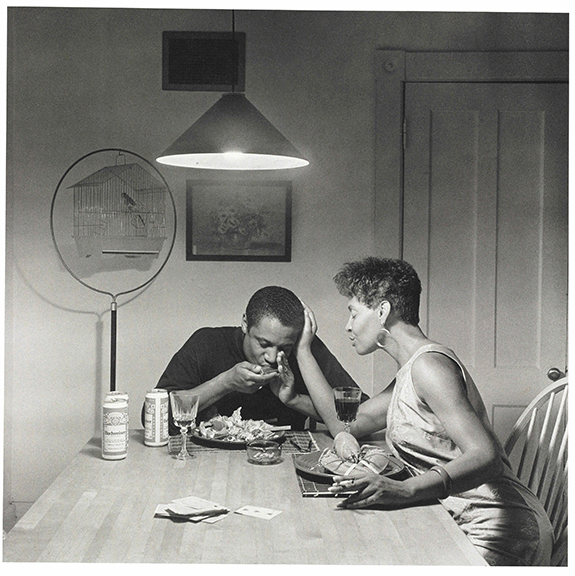
Carrie Mae Weems, Untitled (Woman Touching Man’s Face), from The Kitchen Table Series, 1990
Also, one of the items that stands out is the contrast of types of photographers you are looking at. For instance, Herb Ritts and Bruce Weber are primarily known as commercial photographers. In contrast, Felix Gonzalez-Torres and Robert Mapplethorpe are noted as fine artists. I’m fascinated by this contrast, can you speak to this observation?
While Weber and Ritts are mostly known for their commercial work, they were both making photographs for and within the fine art world at this time. Their work was also distributed at a mass access level along with the work of other artists I’m working with (through things like postcards) in ways that made those images very available and important in queer circles. Their work partly remained viable commercially because of the counter narrative their fine art photography provided at the time.
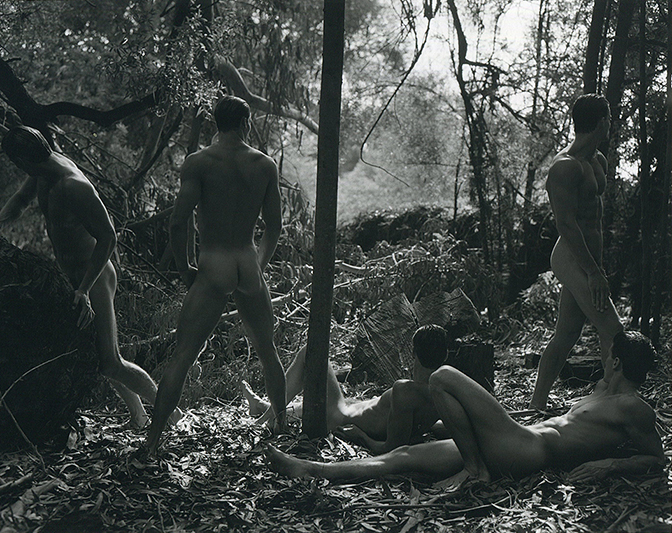
Bruce Weber, Villa Tejas, Santa Barbara, California, 1987
Your topic covers a decade, and therefore is fairly deep in terms of content. How are you editing and focusing the voice of your research?
I have taken on a large project, but have created borders that I can work within that I think will make it manageable. I am only looking at AIDS and this artwork in a U.S. context, I am being specific about the communities I am looking at and taking from. I am narrowing down the artworks and artists I’m researching rather than trying to create a survey of work that fits into my timeline and approach.
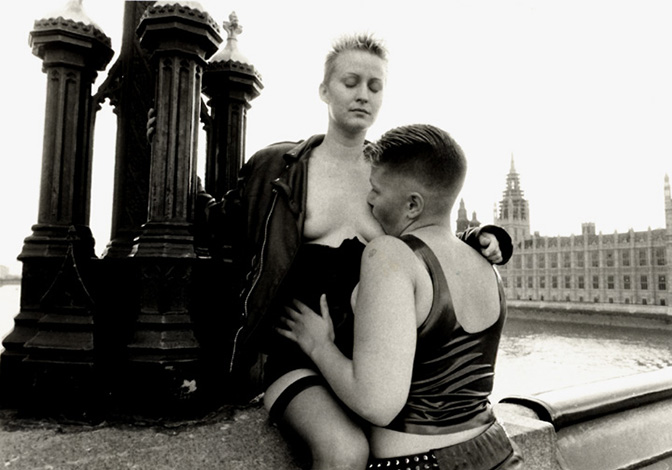
Jill Posener, Dirty Girls in London II, 1988
I’m wondering if you can identify any goals in terms of a timeline? Do you have any specific objectives before the end of the year? Have you put any thought into what you hope to be the final form of this research, an exhibit or book?
I would love for and can envision this research generating one or more exhibitions that I can curate and it would be great if my completed work were picked up for publication.
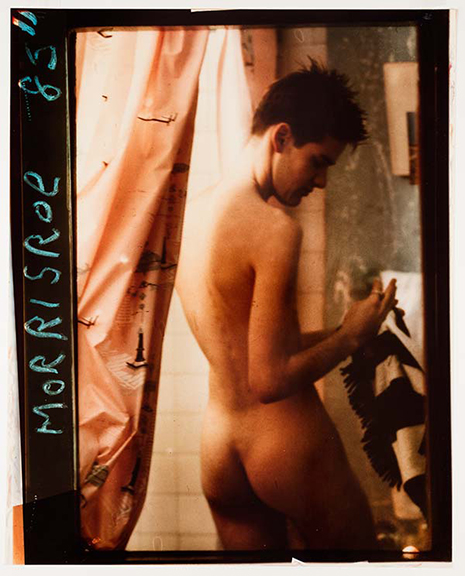
Mark Morrisoe, John-Stefanelli in the Bath, 1985
Alisa Swindell is a PhD Candidate in Art History at the University of Illinois at Chicago. Swindell’s research focuses upon notions of desire as portrayed by artists of the 1980s through the 1990s. In addition, Swindell contributes writings to NewCity, and curates exhibitions of art and photography.
Interview by Chester Alamo-Costello


